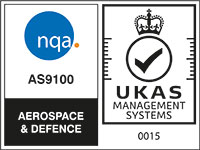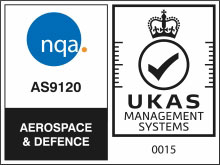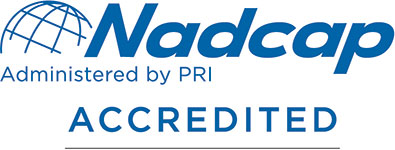Strategy
The Company has successfully grown since inception through a combination of deepening existing client relationships, as well as winning new customer orders. The Company has identified key areas that it believes can be future profitability drivers:
- Business acquisition around diversified aircraft programmes with high production rates for both civil and defence platforms, aided by Velocity’s “Total Cost of Ownership” business case creation process
- Improved supply chain and internal material efficiencies through continued development of in-house processes and digital technology
- Increased capacity utilisation at all manufacturing sites
- Economies of scale for back office and management costs
- Aggregation of material supply for multiple customers as scale increases and specifications allow
The Company’s approach to customer targeting is well defined and the Board intends to accelerate the rate of customer wins with its and the Company’s leadership team proven and diverse industry experience. In addition to the ongoing growth, the Board believes that the Company’s growth can be accelerated as described below.
STRATEGIC CUSTOMER RELATIONSHIPS
Velocity aims to develop, with both new and existing customers, long-term strategic relationships as the industry aims to reduce cost, reduce waste and increase production rates as they look to outsource the entire kitted raw material supply chain in order to meet the demand for highly efficient composite aircraft.
MANUFACTURING AND SERVICE LOCATIONS
Velocity’s manufacturing business model is replicable, and the Company has identified a number of key potential aerospace manufacturing main hubs and satellite hubs in Europe and North America. In addition to utilising existing site capacities, Velocity follows a well-defined process to replicate its hubs and, if required, Velocity will replicate its manufacturing facilities to within close proximity of the customer if there is sufficient demand within the area. Velocity’s business model is predicated on serving clients in proximity to Velocity’s facilities, given the nature of the product which must be stored at a controlled temperature and is transported in refrigerated vehicles under strict controls with a finite life once it has been through Velocity’s manufacturing process. The replicable nature of Velocity’s satellite sites, all supported by central core teams based in the Company’s UK headquarters, provides the Company with significant potential for expansion within the global aerospace market.
PROVEN PROCESSES AND QUALITY APPROVALS
Since the Company was formed in 2007, Velocity has developed robust physical and digital processes in order to deliver its products and services to customers.
As well as maintaining, AS9100, AS9120 and Nadcap AC7118 (Kitting Service Provider) accreditations. Velocity supports new and existing customer relationships by obtaining OEM approvals as required.
INCREASING AMOUNT OF COMPOSITES USED IN MANUFACTURE OF AIRCRAFT
There is considerable data outlining the backlog in orders of the OEM’s, including but not limited to Boeing and Airbus. Composite materials exhibit enhanced properties when compared to their metal counterparts. These enhanced properties include: better weight saving, increased strength/stiffness, corrosion resistance and fatigue resistance. In addition, there is a commercial desire to make aircraft lighter and use less fuel. In turn this results in the aircraft having greater range and being less expensive to operate, which then drives passenger numbers and permits direct flights to an increased number of destinations. Composites are increasingly used within the manufacture of aircraft and aircraft have seen a shift in the split of the materials used in its structure. This trend has affected the large, twin aisle aircraft to date but will also apply to smaller, single aisle aircraft as platforms are replaced. The Directors believe that there is significant pressure on the aerospace supply chain, including the raw material providers, as production volumes increase, and also composite use increases across multiple aircraft platforms. The Directors believe that Velocity is well positioned to take advantage of this pressure and increasing market opportunity. This has been enhanced through referrals by composite suppliers to Velocity in order to create efficiencies in the supply chain.
MARKET TREND
In addition to the increased use of composites described above, the Directors believes that the aerospace industry is entering a period where the focus for the Primes (and hence the Tier 1’s) is around aircraft productivity. With the introduction of newer generation platforms such as B777X, B787 and A350, the Primes have now completed a sustained period of design innovation and technology introduction, and hence their focus on productivity and production rate recovery after the impact of Covid-19. Along with the significant order books and backlogs for new aircraft, it is clear that Primes are looking to increase their production rates and to reduce the cost of manufacture in order for them to realise returns after this period. It is in this environment where the Directors believe that Velocity’s services will be in high demand as manufacturers look to introduce a leaner supply chain, and consolidate the supply base to bring focus, reduce waste, increased product quality and reduce variation, while outsourcing non-core business to increase capacity. This is particularly attractive to customers of Velocity as increased productivity can be achieved whilst at the same time reducing the total cost of manufacture.
R&D
In order for Velocity to provide its total service with any material from any supplier delivered lineside in the form of use, Velocity must develop for each customer, at each specific customer site, a unique approach to its service offering. This requires appropriate research and development to deliver these new products utilising new processes and inhouse developed technologies for each customer location. To further grow and to innovate Velocity’s total service offering to preserve its market position, Velocity has opened a global research and development centre in North West England where all new product development, process development, new product innovation and digital technology solutions can be developed and matured under the rigorous environmental controls needed for aerospace composite manufacture.



